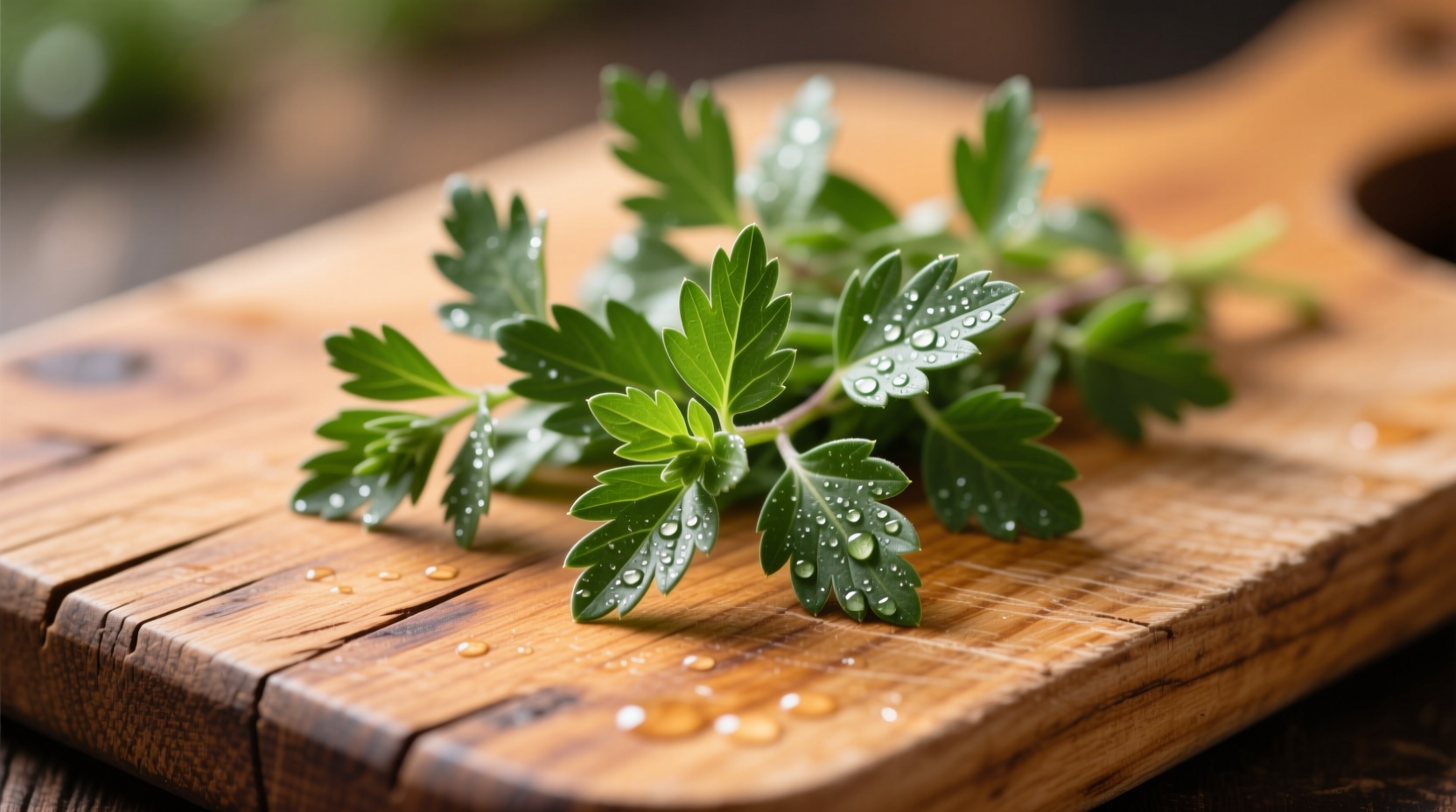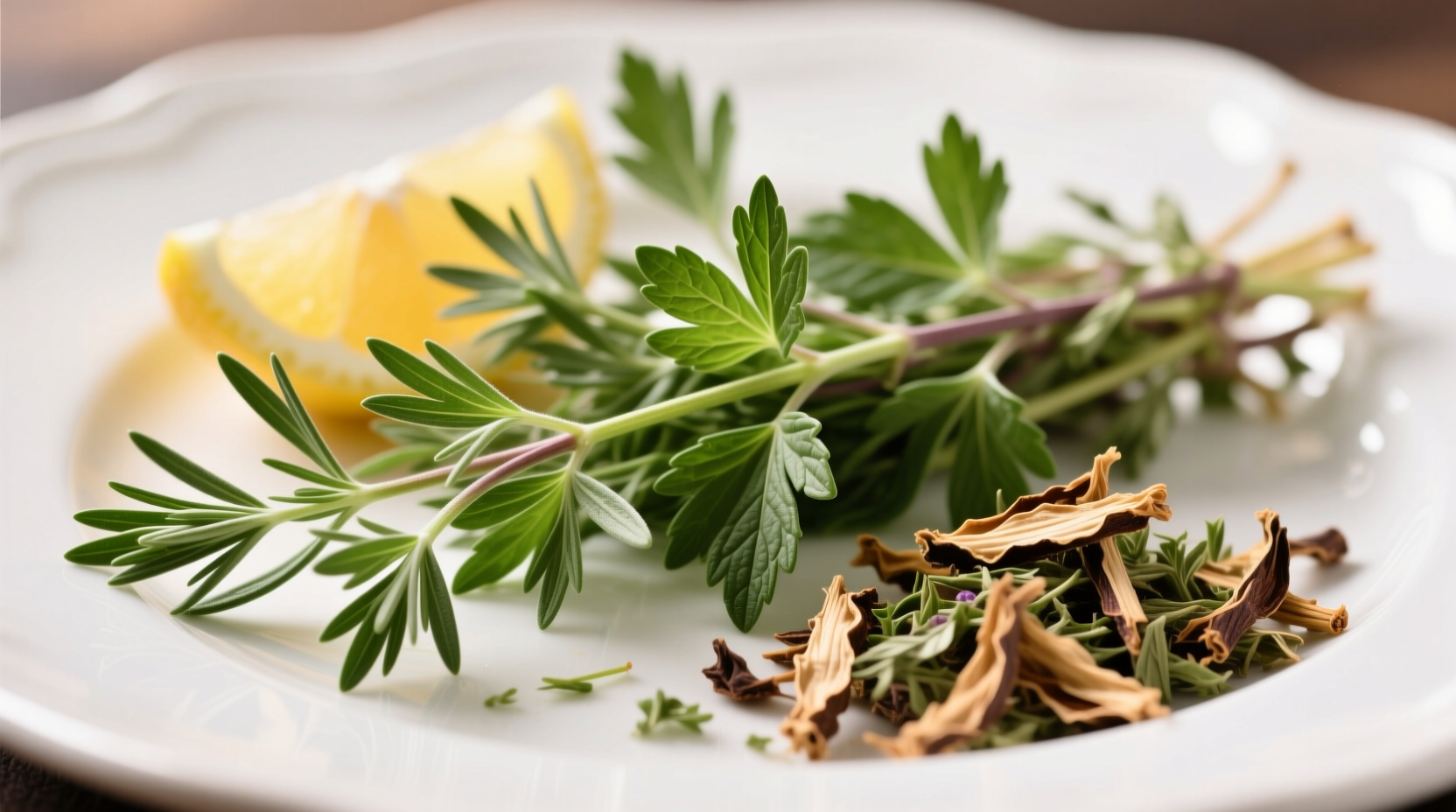Tarragon has a distinctive sweet-anise flavor with subtle hints of vanilla, citrus, and peppery notes. French tarragon (Artemisia dracunculus) offers the most pronounced, refined taste profile essential for classic French sauces like béarnaise, while Russian tarragon provides a milder, slightly bitter alternative. The fresh herb delivers brighter, more complex flavors compared to dried varieties, with optimal flavor release when added late in cooking.
When you bite into a fresh tarragon leaf, you'll first notice a sweet licorice-like flavor that quickly evolves into something more complex. This elegant herb doesn't just taste like anise or fennel—it creates a sophisticated flavor experience that elevates dishes without overwhelming them. Understanding tarragon's unique taste profile is essential for using it effectively in your cooking, whether you're making a classic French sauce, dressing a salad, or infusing vinegar.
The Complete Tarragon Flavor Profile
Professional chefs and food scientists describe tarragon's flavor as having three distinct layers that unfold as you taste it. The initial impression is that familiar sweet-anise note, thanks to the compound estragole which makes up 60-80% of tarragon's essential oil. But unlike star anise which delivers a one-dimensional licorice punch, tarragon's flavor quickly develops additional dimensions.
Within seconds, subtle citrus undertones emerge—think lemon verbena rather than sharp lemon. These bright notes balance the sweetness perfectly. Finally, a gentle peppery finish provides complexity without heat, making tarragon remarkably versatile. This layered flavor profile explains why culinary experts consider tarragon one of the "fines herbes" of French cuisine alongside chervil, chives, and parsley.
French vs. Russian Tarragon: Critical Flavor Differences
Not all tarragon is created equal. The two main varieties—French and Russian—deliver dramatically different culinary experiences. French tarragon (Artemisia dracunculus var. sativa) contains significantly higher concentrations of flavor compounds, while Russian tarragon (Artemisia dracunculoides) offers a much milder, sometimes bitter alternative.
| Characteristic | French Tarragon | Russian Tarragon |
|---|---|---|
| Primary Flavor | Rich anise with vanilla notes | Mild anise with bitter undertones |
| Estragole Content | 70-80% | 10-20% |
| Leaf Texture | Smooth, narrow, vibrant green | Rougher, broader, paler green |
| Culinary Value | Essential for classic preparations | Limited use, often disappointing |
This chemical composition difference explains why professional chefs exclusively use French tarragon for authentic preparations. According to research from the University of Minnesota Extension, French tarragon contains nearly four times more essential oil than its Russian counterpart, directly impacting flavor intensity.
How Tarragon's Flavor Has Evolved in Culinary History
Tarragon's journey from medicinal herb to culinary essential reveals much about its distinctive flavor profile. Understanding this timeline helps explain why certain cuisines embrace tarragon while others rarely use it:
- Ancient Times: First documented in Persian medical texts around 1000 CE for digestive purposes, valued for its anesthetic properties
- 16th Century: Introduced to England where it was called "dragon herb" due to its winding root structure
- 17th Century: Became essential in French cuisine, particularly in the development of classic sauces
- 19th Century: Codified as one of the fundamental herbs in Escoffier's culinary canon
- 20th Century: Gained popularity in American cooking through Julia Child's French cooking demonstrations
This historical progression shows how tarragon's unique flavor profile gradually earned its place as a culinary essential rather than a novelty. The herb's ability to complement rather than dominate other flavors made it indispensable in refined French cuisine where balance is paramount.
Perfect Pairings: What Foods Complement Tarragon's Flavor
Tarragon's complex flavor shines brightest when paired thoughtfully. Unlike more aggressive herbs, tarragon enhances rather than masks other ingredients. Consider these perfect matches:
- Eggs: The mild richness of eggs provides the perfect canvas for tarragon's subtle notes—try it in omelets or deviled eggs
- Chicken: Particularly with lemon-based preparations where tarragon's citrus undertones create harmony
- Fish: Excellent with delicate white fish like sole or halibut, but avoid pairing with strongly flavored fish
- Vinegar: Tarragon-infused vinegar forms the base of classic French vinaigrettes
- Mayonnaise: Essential for remoulade and other elegant sauces
Chef Sophie Dubois explains: "Tarragon's magic happens when it bridges sweet and savory elements. That's why it works beautifully in dishes that combine fruit with poultry—think chicken with apricots or duck with cherries. The herb's vanilla notes connect with the fruit's sweetness while its peppery finish balances the meat's richness."
Tarragon Cooking Techniques That Maximize Flavor
How you handle tarragon dramatically affects its flavor delivery. Unlike hardy herbs like rosemary or thyme, tarragon's delicate flavor compounds break down with prolonged heat. Follow these professional techniques:
- Timing matters: Add fresh tarragon in the last 2-3 minutes of cooking to preserve volatile flavor compounds
- Chopping technique: Use a sharp knife and minimal chopping to prevent bruising which releases bitter compounds
- Drying limitations: Dried tarragon loses up to 70% of its essential oils—use 3x more dried than fresh as a starting point
- Infusion method: For maximum flavor extraction, steep tarragon in warm (not boiling) cream or vinegar for 20-30 minutes

When Tarragon Doesn't Work: Context Boundaries
Despite its versatility, tarragon has clear limitations where its distinctive flavor becomes problematic:
- Robust meat dishes: Overwhelmed by strong flavors in beef stews or lamb preparations
- Spicy cuisines: Clashes with bold spices in Indian, Mexican, or Thai cooking
- Long-cooked dishes: Flavor dissipates in soups or sauces requiring hours of simmering
- Strongly flavored vegetables: Doesn't complement cabbage, Brussels sprouts, or eggplant well
Food science research from the USDA National Agricultural Library confirms that tarragon's primary flavor compound estragole begins breaking down at temperatures above 160°F (71°C), explaining why it's unsuitable for high-heat applications. This chemical sensitivity defines tarragon's culinary boundaries more precisely than subjective taste preferences.
Common Tarragon Mistakes Home Cooks Make
Even experienced cooks often misuse tarragon. Avoid these frequent errors:
- Overusing Russian tarragon: Many garden centers sell the inferior Russian variety—look for smooth, narrow leaves and a pronounced aroma
- Adding too early: Tossing tarragon into dishes at the beginning of cooking wastes its delicate flavor
- Confusing with basil: Though both have anise notes, basil's sweetness and different chemical profile create entirely different results
- Using dried as equivalent: Dried tarragon lacks the complexity of fresh and requires significant quantity adjustments
Tarragon Substitutes When You're Out
When you need a tarragon alternative, consider these options with their flavor differences:
- Chervil + fennel fronds: Provides the closest approximation (use 2 parts chervil to 1 part fennel)
- Dill + chives: Good for fish dishes but lacks the anise backbone
- Basil + tarragon vinegar: Works in dressings but changes the flavor profile significantly
- Anise seed (sparingly): Only use 1/8 teaspoon per tablespoon of tarragon needed
Remember that no substitute perfectly replicates tarragon's complex flavor profile. As culinary historian Dr. Harold McGee notes in On Food and Cooking, "tarragon's unique combination of sweet, peppery, and citrus notes makes it essentially irreplaceable in classic preparations."











 浙公网安备
33010002000092号
浙公网安备
33010002000092号 浙B2-20120091-4
浙B2-20120091-4